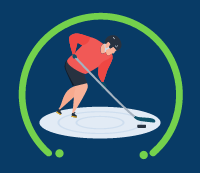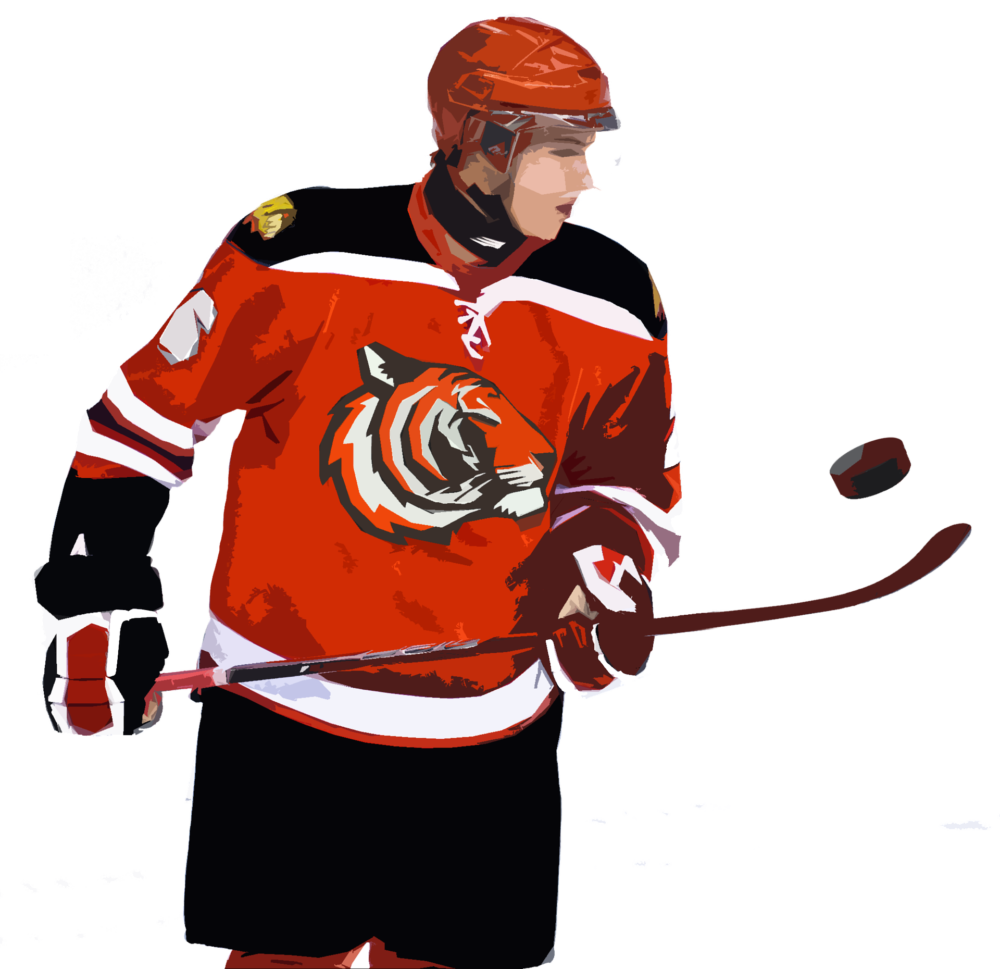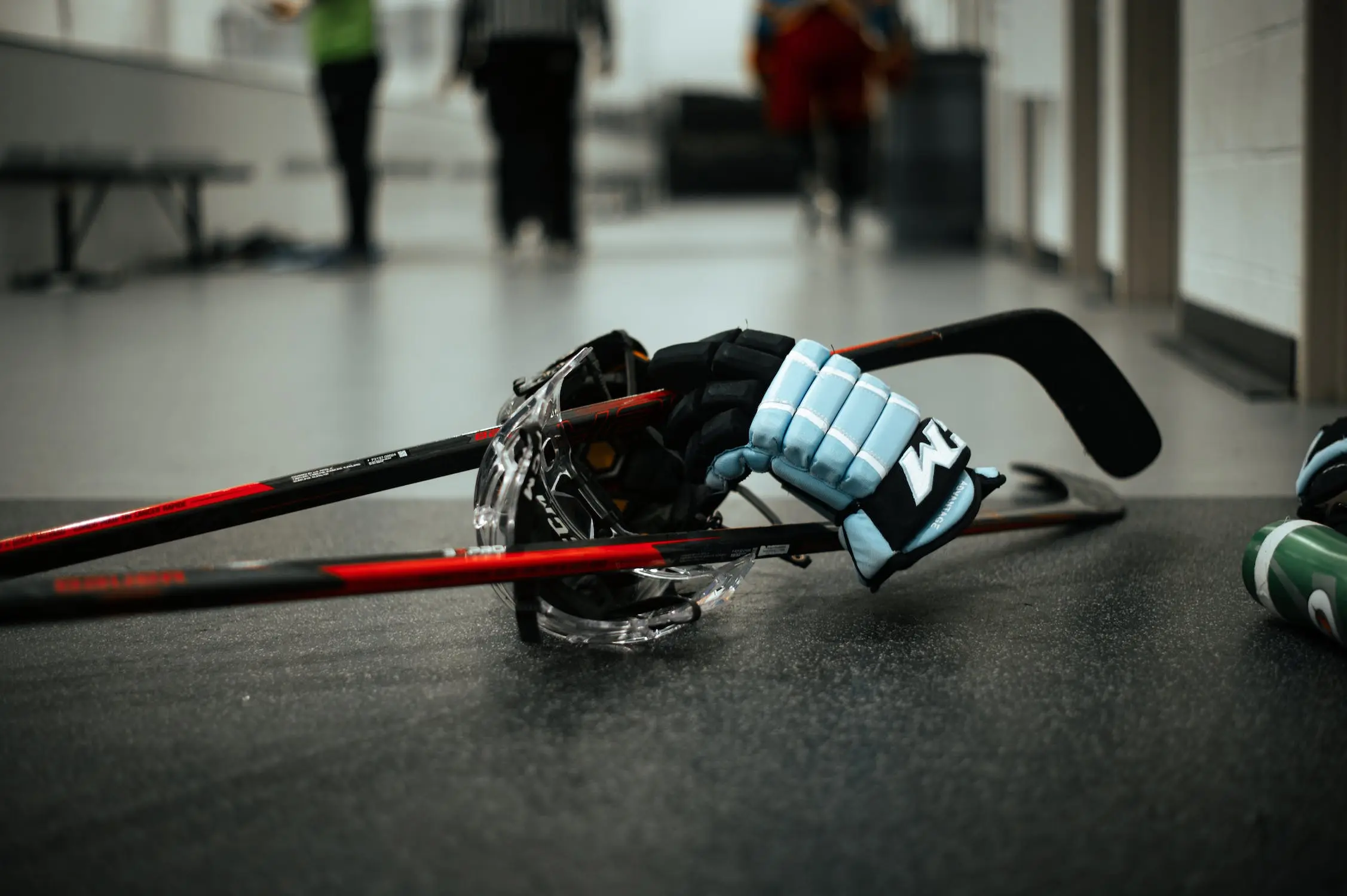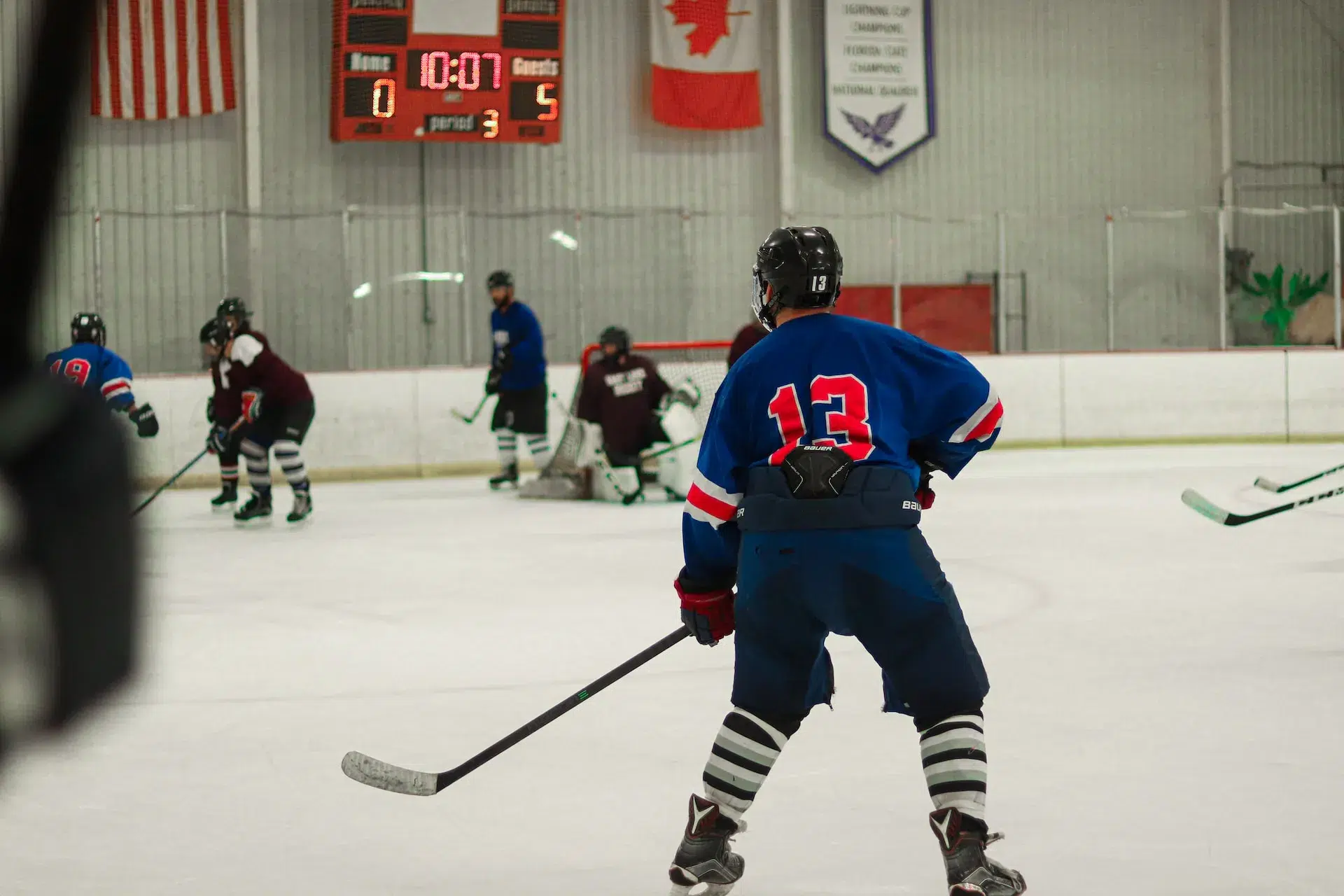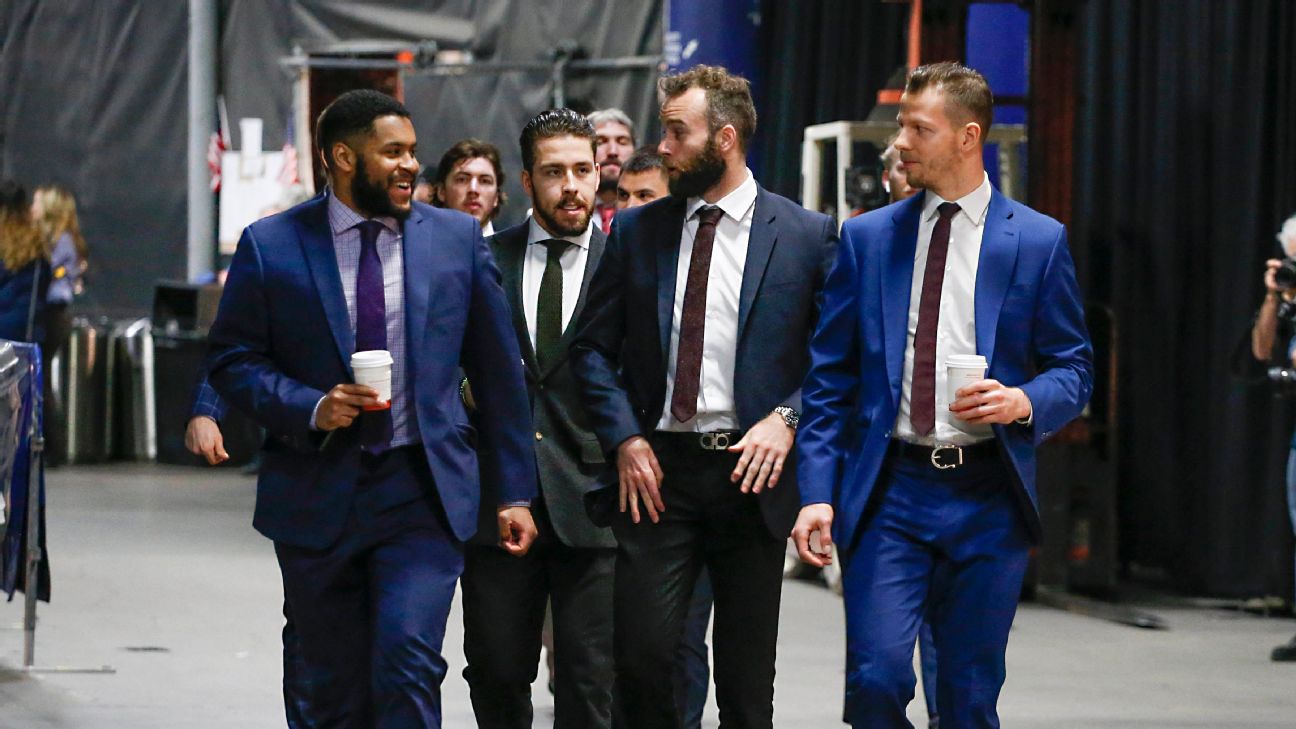Ice hockey is a fast-paced team sport defined by specialized positions, fluid strategy, and lightning-quick transitions. At any moment during a regulation game, each team has six players on the ice: three forwards (center, left wing, right wing), two defensemen (left and right), and one goaltender. Understanding these roles is key to grasping both the flow of the game and the responsibilities each player shoulders.
Positions in Ice Hockey
Here’s a breakdown of the six core positions you’ll see on the ice:
- Goaltender (Goalie): The last line of defense, responsible for stopping pucks from entering the net.
- Center: The team’s playmaker. Think of them as the quarterback—leading faceoffs, managing puck movement, and transitioning between offense and defense.
- Left & Right Wingers: Positioned on either side of the center, wingers focus on offense, taking shots, making quick passes, and applying forechecking pressure.
- Left & Right Defensemen: Guard their respective sides of the ice, block shots, protect the goalie, and start offensive breakouts from the defensive zone.
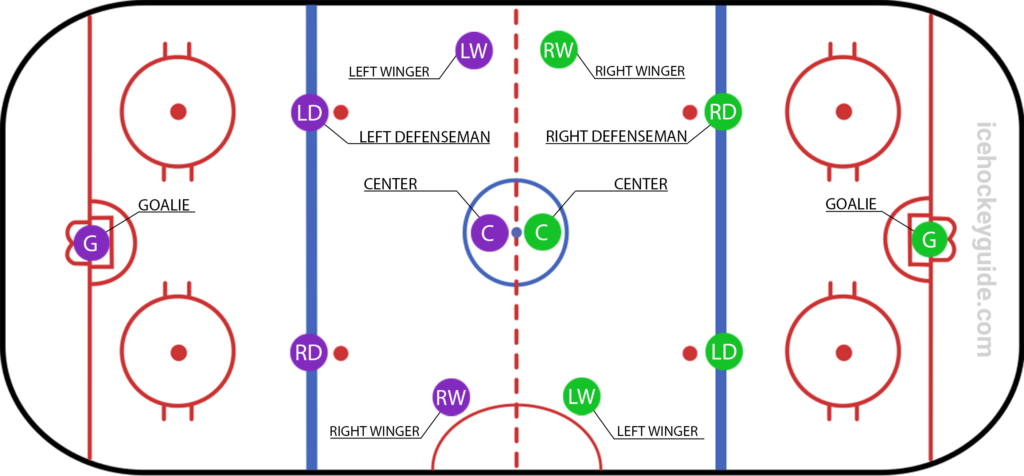
The below table provides an overview of the different positions in ice hockey, including goaltender, defenseman, center, and winger. It lists each position’s responsibilities and specific skills required to play the part effectively.
| Position | Primary Responsibilities | Key Skills |
|---|---|---|
| Goaltender | Block shots, control rebounds, manage the crease | Reflexes, lateral quickness, vision |
| Defensemen | Defend zone, block lanes, support breakouts | Strength, skating, positioning |
| Center | Faceoffs, playmaking, defensive coverage | Vision, passing, endurance |
| Wingers | Score goals, assist plays, support defense | Speed, shooting, stickhandling |
Positional Evolution in Hockey
Hockey positions weren’t always this specialized. Ancient forms of hockey trace back to 2,000 BC, but it was the late 19th and early 20th centuries that brought structural formations like the triangle offense (formed by the center and two wingers). Over time, coaching strategies, player size, and skating advancements refined each position’s modern identity.
Specialized Roles in Ice Hockey
Modern hockey isn’t just about traditional positions. Players often adopt specialized roles:
- Power Forward: Combines scoring ability with physical play.
- Two-Way Forward: Equally skilled at defense and offense.
- Enforcer: Protects teammates and changes momentum with physicality.
- Grinder: Wins battles in corners and wears down the opposition.
- Pest: Agitates opponents and draws penalties.
- Swingman: Versatile player who can fill both forward and defensive roles.
These roles reflect how the game has evolved. Today’s players must be dynamic and adaptable. Coaches even consider factors like handedness when assigning wingers to specific sides for optimal puck handling and pass angles.
As a player in any of the ice hockey positions, protecting your head with a high-quality hockey helmet is essential. Find out how to choose the right helmet with our guide on how to buy a hockey helmet, and stay safe on the ice.
Hockey Forwards
The three forward positions—center, left wing, and right wing—are typically the driving force of a team’s offense.
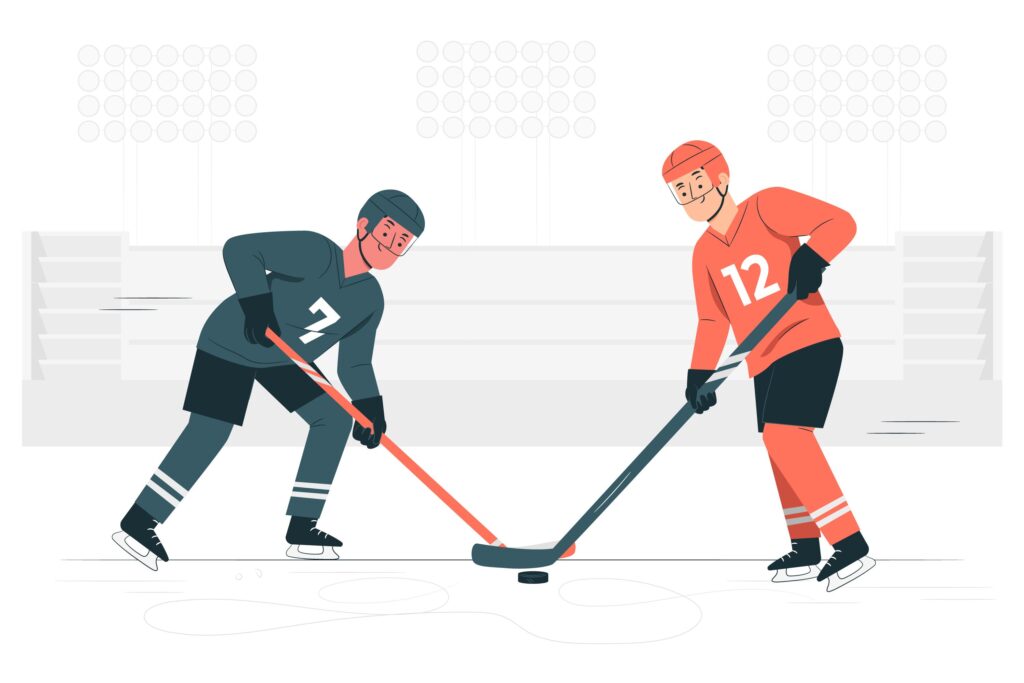
The Center: The Engine of the Offense
Centers are responsible for initiating plays, taking faceoffs, and playing a two-way role. Their role requires a high hockey IQ, as they dictate the pace and balance between attacking and defending. Centers also need exceptional stamina and positioning sense.
📊 Stat Spotlight: Centers like Nathan MacKinnon and Connor McDavid consistently rank among the NHL’s top point leaders due to their involvement at both ends of the ice.
Center Responsibilities:
-
Take faceoffs in offensive, defensive, and neutral zones
-
Lead the forecheck and backcheck
-
Support defense in their zone and drive the puck offensively
-
Distribute passes and generate scoring chances
-
Transition quickly between attack and defense
Center Positioning: In the offensive zone, the center operates around the high slot, facilitating puck movement and finding openings. In the defensive zone, they support defensemen low and help clear pucks.
Wingers: Speed, Scoring, and Support
Wingers flank the center and bring speed and shooting prowess. Handedness often plays a role in whether a winger plays on their natural or off-wing.
Left Winger: Plays on the left side, cutting in to shoot from the circle and battling along the boards.
Right Winger: Mirrors the left, but often carries a heavier shot and plays a more aggressive forechecking role.
Winger Responsibilities:
-
Create and finish scoring opportunities
-
Carry the puck up the boards into the zone
-
Pressure opposing defensemen
-
Cover defensive points and disrupt breakout passes
-
Intercept transitions and initiate counterattacks
📊 Stat Spotlight: Wingers like Alex Ovechkin are known for goal-scoring dominance, often topping the league in goals.
Winger Positioning: Wingers usually operate between the boards and faceoff circles in both zones. Offensively, they drive toward the net or shoot from the half wall. Defensively, they help cover points and jump on turnovers.
Hockey Defensemen
Defensemen are the backbone of a team’s defensive unit. Two are on the ice at all times—left and right—each responsible for guarding their side of the rink.
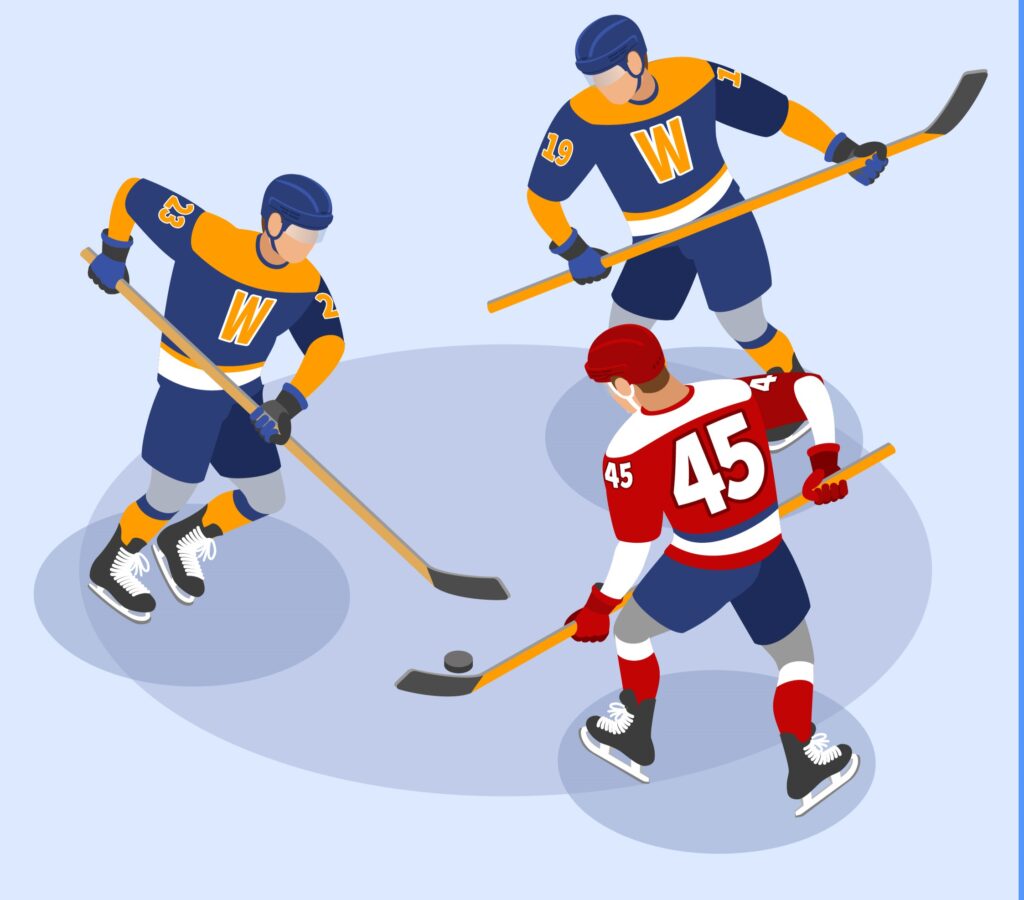
Key Responsibilities:
-
Defend against opposing rushes and protect the goaltender
-
Break up passes and block shots
-
Win battles in the corners and in front of the net
-
Start transitions with outlet passes and clear the zone
Skill Set: Good defensemen are exceptional backward skaters, possess high hockey IQ, and excel at positioning. They need to read plays, control gaps, and maintain puck awareness.
📊 Stat Spotlight: Defensemen often lead teams in plus/minus ratings due to their consistent ice time and impact across all zones.
Positioning: In the defensive zone, defensemen work from the corners and behind the net to the front of the crease, staying between the puck and their goalie. In the offensive zone, they typically hold the blue line and look for shooting lanes or passes to keep the pressure on.
Hockey Goaltender (Goalie)
The goalie is the last line of defense and one of the most mentally demanding positions in the sport.
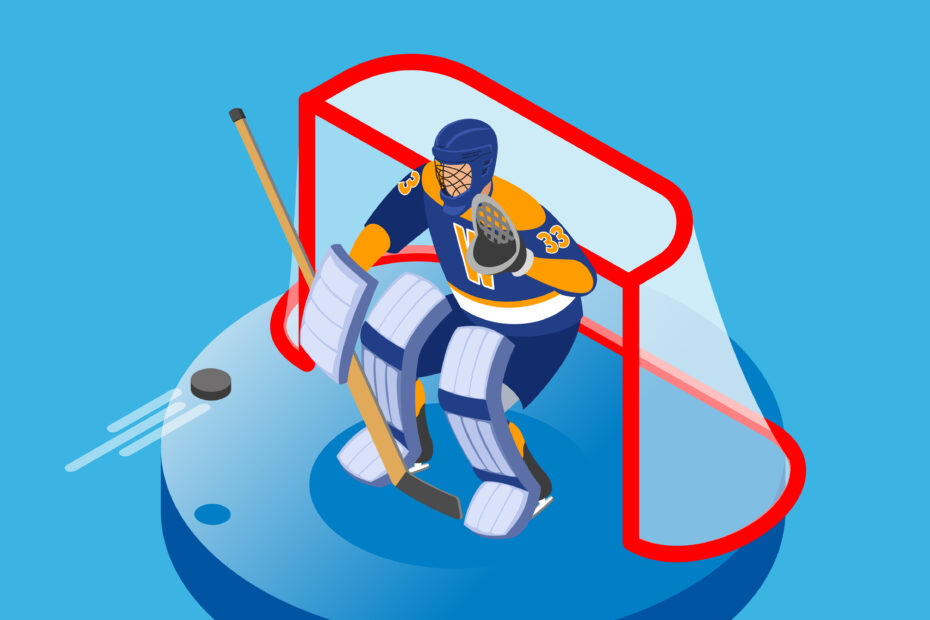
Goaltending Responsibilities:
-
Stop all puck attempts on goal
-
Control and direct rebounds away from danger
-
Maintain strong positioning within the crease
-
Communicate with defensemen
-
Initiate breakouts with smart puck handling
Styles of Goaltending:
-
Stand-Up: Rare today, goalies stay upright for saves
-
Hybrid: Combines stand-up and butterfly styles
-
Butterfly: Most popular style today; goalies drop to their knees for saves while keeping upper body square to the puck
Goalie Gear: Includes wider goalie stick, leg pads, blocker, glove, specialized skates, chest protector, and a heavily padded helmet.
📊 Stat Spotlight: NHL goalie save percentages average around .910 in recent seasons—highlighting the narrow margin for error in elite goaltending.
Bonus Resource: Beginner’s Guide to Ice Hockey Equipment for full goalie and skater gear breakdown.
Special Teams: Power Play & Penalty Kill
Special teams play a crucial role in modern hockey strategy.
-
Power Play: When a team has a man advantage due to an opponent’s penalty. Players are chosen for puck control, quick puck movement, and high shot accuracy.
-
Penalty Kill: When short-handed, teams rely on disciplined players who can block shots, intercept passes, and clear the puck.
Coaches build specific units for these moments, and shifts in momentum often hinge on power play or penalty kill success.
Leadership and Game Management in Hockey
While players dictate action on the ice, leadership and regulation come from these figures:
-
Captain: Represents the team to officials and leads both emotionally and strategically.
-
Coach: Crafts lineups, in-game tactics, and long-term team identity.
-
Officials: Enforce rules, issue penalties, and manage faceoffs and stoppages.
Communication, Analytics & Adaptability
Modern teams rely on constant communication—especially between goalies and defensemen—to maintain defensive structure. Analytics now play a huge role in tracking positional efficiency, expected goals (xG), and plus-minus metrics. Versatility is also increasingly valuable: many players can shift roles on the fly.
📊 Stat Spotlight: NHL teams using real-time data tracking show 15–20% faster decision-making in zone transitions, as reported by coaches in the 2024–25 season.
Frequently Asked Questions (FAQs) on Hockey Positions
What does the term ‘position player’ mean in hockey?
It refers to any player on the ice who is not a goaltender—this includes forwards and defensemen.
What is the most difficult position to play in hockey?
Many consider the goalie to be the most mentally and physically challenging role due to the pressure and skill it requires to prevent goals.
Where do you put your weakest player in hockey?
Coaches may hide less experienced players on the fourth line or in less critical defensive roles to reduce risk, but all players have responsibilities.
What is the easiest hockey position?
No position is “easy,” but some argue that wingers face fewer strategic demands than centers or defensemen.
If you want to enhance your physical and mental abilities for ice hockey, take a look at my guide to off-ice hockey training. It covers everything from strength and speed to endurance and cognitive agility.
What is the most physically demanding hockey position?
Centers and defensemen often log the most ice time and responsibilities, making their roles physically and mentally draining.
Can players switch positions during a game?
Yes, although uncommon. Positional switches typically happen when compensating for an injury or adapting to in-game situations.
Do different positions require different skills?
Absolutely. Goalies need reflexes and mental toughness, forwards need agility and shooting, while defensemen need positioning and strength.
Can players rest during the game?
Yes. Players change lines in short shifts (typically 45 seconds to 1 minute) to maintain peak energy throughout the game.
How many players are on a hockey team?
A roster typically includes 20 players, with 6 on the ice during play (5 skaters + 1 goalie) and the rest available for substitution.
Check out my latest article on Ice Hockey Rules to learn about the essential rules and regulations of one of the fastest-growing sports in the world. Get familiar with the key guidelines to fully understand the game of ice hockey.
Notable Ice Hockey Players and Their Positions
Explore iconic Ice Hockey players who have left their mark on the sport. Discover their positions and remarkable achievements that have contributed to the game’s legacy:
| Player Name | Position | Notable Achievements |
|---|---|---|
| Wayne Gretzky | Center | All-time NHL points leader, 4x Stanley Cup winner |
| Bobby Orr | Defenseman | Revolutionized the defenseman role, Norris winner |
| Mario Lemieux | Center | 3x Hart Trophy, 2x Stanley Cup winner |
| Gordie Howe | Right Wing | Mr. Hockey," legendary two-way forward |
| Patrick Roy | Goalie | 4x Stanley Cup champion, Conn Smythe winner |
| Jaromir Jagr | Right Wing | 2x Stanley Cup, 5x scoring champion |
| Nicklas Lidstrom | Defenseman | 7x Norris Trophy, 4x Stanley Cup champion |
| Sidney Crosby | Center | 3x Stanley Cup winner, Olympic gold medalist |
| Martin Brodeur | Goalie | Most wins/shutouts in NHL history |
| Maurice Richard | Right Wing | First to score 50 goals in 50 games |
Final Thoughts
While every position in hockey carries its own set of responsibilities, they all share one common goal—working as a unit to outscore the opponent. Whether you’re a physical defenseman, a crafty center, or a lightning-quick winger, success comes from teamwork, effort, and knowing your role.
Modern hockey demands more than physicality. Today’s players lean on mental resilience, adaptability, and advanced training methods to elevate their game. If you’re just starting out or seeking to master your position, start by understanding where your strengths lie.
Want more tips? Check out our beginner’s guide to off-ice training for hockey and the rules of hockey for deeper insights into becoming a smarter, more confident player.
Take Your Ice Hockey Game to the Next Level: Tips, Skills, and Nutrition!
Enhance your ice hockey performance with our comprehensive guides covering essential tips, advanced skills, equipment recommendations, and nutrition advice. Whether you want to improve your game, master skating drills, understand the importance of proper nutrition, or decode icing in hockey, we have you covered.
- Ice Hockey Tips: Unlock Strategies for Success on the Ice
- Ice Hockey Skills: Master Techniques to Excel in the Game
- Types of Hockey Helmets: Choose the Perfect Helmet for Safety and Performance
- Ice Hockey Skating Drills: Improve Your Agility and Speed on the Ice
- Icing in Hockey: Understand the Rule and Its Impact on Gameplay
- Ice Hockey Nutrition: Fuel Your Performance and Recovery
- Body Checking In Hockey
- Hockey Goal Dimensions
Get ready to elevate your game to new heights. Stay tuned as we continually update our content to help you become the ultimate ice hockey player.
